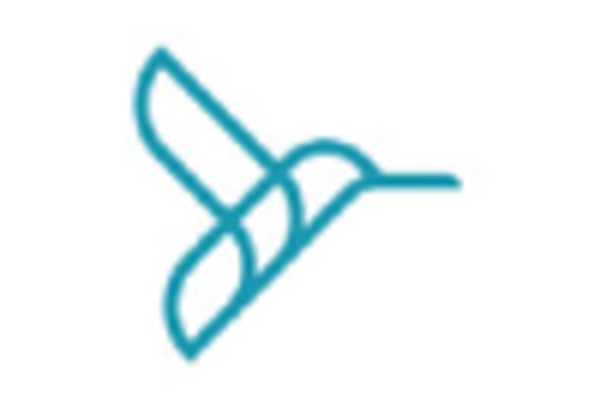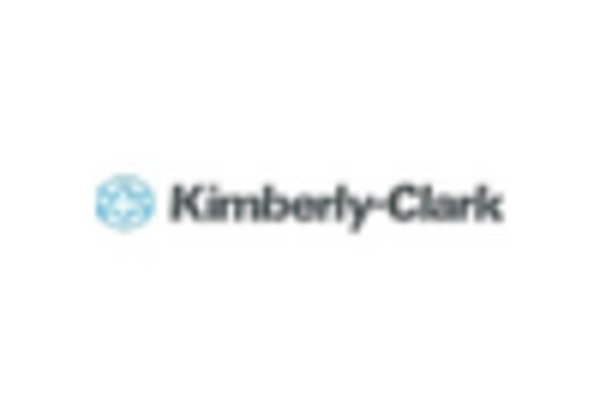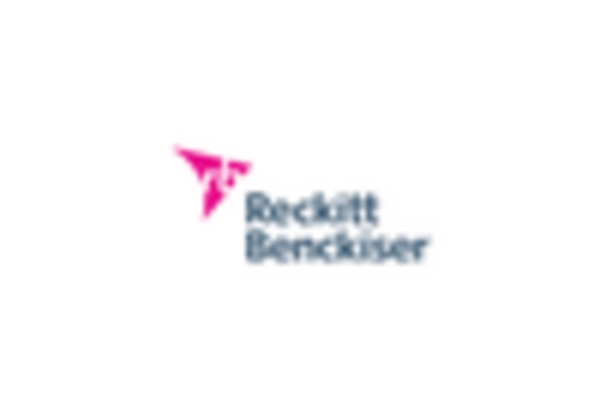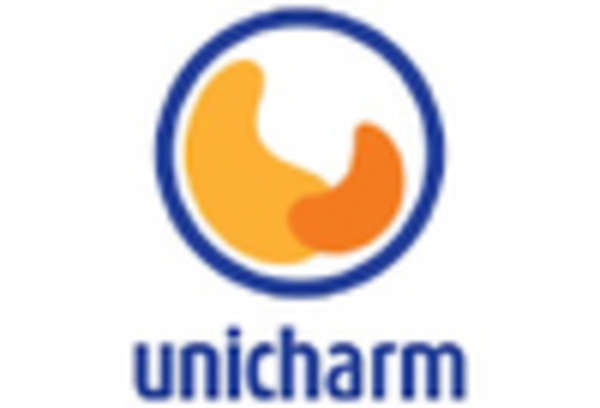Expansion of Distribution Channels
The expansion of distribution channels is playing a pivotal role in the growth of the wet wipes market. Retailers are increasingly adopting omnichannel strategies, making products more accessible to consumers. The Global Wet Wipes Industry benefits from the proliferation of e-commerce platforms, which allow for wider reach and convenience. Data indicates that online sales of wet wipes are expected to grow at a rate of 8% annually, as consumers increasingly prefer the ease of purchasing products online. This trend suggests that brands must adapt their distribution strategies to capitalize on the growing online shopping culture.
Innovations in Product Formulation
Innovations in product formulation are driving advancements in the wet wipes market. Manufacturers are investing in research and development to create wipes that offer enhanced functionality, such as added moisturizers or specialized cleaning agents. The Global Wet Wipes Industry is witnessing the introduction of wipes designed for specific applications, such as baby care, personal hygiene, and household cleaning. Market analysis indicates that the segment for specialized wipes is likely to grow by 5% annually, as consumers seek products tailored to their unique needs. This focus on innovation may provide brands with a competitive edge in a crowded marketplace.
Increased Focus on Health and Hygiene
The heightened awareness of health and hygiene practices is a critical driver for the wet wipes market. Consumers are increasingly prioritizing cleanliness in their daily routines, leading to a surge in demand for disinfecting and sanitizing wipes. The Global Wet Wipes Industry is experiencing a notable increase in sales of antibacterial and antiviral wipes, particularly in sectors such as healthcare and food service. Market data reveals that the health and hygiene segment is projected to grow by approximately 7% over the next few years, as consumers continue to seek products that ensure safety and cleanliness in their environments.
Rising Demand for Convenience Products
The increasing consumer preference for convenience products is a notable driver in the wet wipes market. As lifestyles become busier, individuals seek products that offer quick and efficient solutions for personal hygiene and cleaning. The Global Wet Wipes Industry is witnessing a surge in demand for single-use wipes that cater to on-the-go lifestyles. This trend is particularly evident in urban areas where consumers prioritize time-saving products. Market data indicates that the convenience segment is projected to grow at a compound annual growth rate of approximately 5.5% over the next five years. This growth is likely to be fueled by the rising number of working professionals and the increasing popularity of travel-sized products.
Evolving Consumer Preferences Towards Eco-Friendly Products
There is a discernible shift in consumer preferences towards eco-friendly and sustainable products, which is significantly impacting the wet wipes market. As environmental awareness grows, consumers are increasingly seeking products that align with their values. The Global Wet Wipes Industry is responding to this demand by introducing biodegradable and compostable wipes. Industry expert's suggests that the eco-friendly segment is expected to capture a larger share of the market, with an anticipated growth rate of around 6% annually. This trend indicates a potential for brands to innovate and differentiate themselves through sustainable practices, thereby appealing to environmentally conscious consumers.


















Leave a Comment